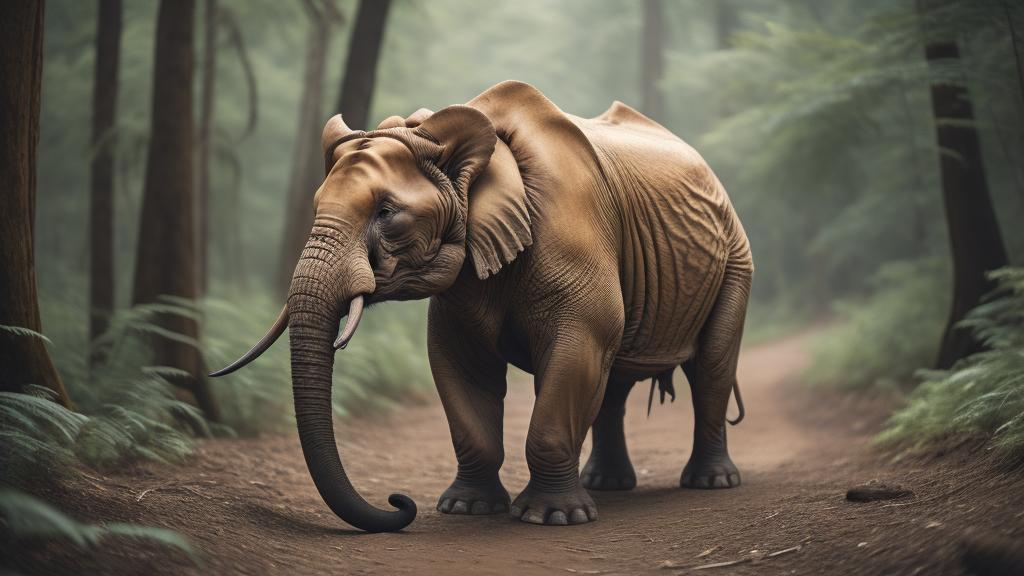The animal kingdom is a vast and fascinating world filled with creatures exhibiting bizarre behaviors and possessing incredible abilities. From intelligence that rivals humans to survival mechanisms that seem like science fiction, the secrets of these animals never cease to amaze. Let's dive into some of the most remarkable and lesser-known aspects of wildlife, shedding light on their extraordinary nature.
### Clever Crows: Feathered Geniuses
Crows have long been symbols of intelligence and mystery. Not only can they recognize human faces, but they also have sophisticated problem-solving skills. Studies have shown that crows can use tools, solving complex puzzles to obtain food. They even possess a form of empathy, consoling widowed or wounded peers. It's no wonder why these avian Einsteins have become folklore staples around the world.
### Dancing Spiders: Arachnids with Moves
It's often assumed that spiders are solitary hunters focused solely on weaving webs and catching prey. However, some spider species are known for their intricate mating dances. The peacock spider, for instance, performs colorful and elaborate dances to attract mates. These spiders raise their legs and vibrate their bodies, creating a visual and auditory spectacle that can be likened to a peacock fanning its feathers. The male's survival often depends on his dance, as a failed performance might mean he becomes a meal for the unimpressed female.
### Electric Fish: Nature’s Living Batteries
Electric fish, like the electric eel, possess the ability to generate significant electric shocks. They use this power to hunt and protect themselves. What's more astonishing is that their bodies act as living batteries, featuring specialized cells known as electrocytes. When these cells discharge simultaneously, they produce electricity that can stun prey or deter predators. These fish have inspired numerous technological innovations, from medical devices to energy-efficient batteries.
### Memory of a Dolphin: Underwater Einsteins
Dolphins are celebrated for their intelligence and have the brainpower to back it up. Their ability to remember each other’s distinctive whistles for years points to complex social structures and relationships. They also exhibit advanced problem-solving skills and have been known to use tools, such as sponges, to protect their snouts while foraging on the seabed. Moreover, dolphins can understand complex instructions and mimic human actions, showcasing their cognitive prowess.
### Misunderstood Opossums: The Saviors in Disguise
Opossums, often reviled for their scavenging habits and unusual appearance, play a crucial role in ecosystems. They are immune to snake venom and are thus effective controllers of snake populations. Additionally, they consume large quantities of ticks, reducing the spread of tick-borne diseases. Contrary to popular belief, opossums are clean animals, grooming themselves meticulously. Their reputation may be poor, but their contributions to the environment are invaluable.
### Chameleon Champions: Masters of Disguise
Chameleons are renowned for their color-changing capabilities, which they use for camouflage, thermoregulation, and communication. What’s less known is the mechanism behind this adaptation. Contrary to the myth that chameleons change color to match any background, they actually adjust the spacing of special cells called chromatophores. This adjustment reflects light differently, allowing them to shift hues. Their camouflage is an intricate process influenced by their mood, temperature, and surroundings.
### Ant Architects: Construction Geniuses
Ants are some of the most industrious creatures, exhibiting teamwork and architectural ingenuity that put human efforts to shame. Leafcutter ants, for instance, can build sprawling underground nests with complex ventilation systems to farm fungus, their primary food source. These networks are so efficient that they offer constant airflow and temperature control, ensuring the colony’s survival even in harsh conditions. The engineering prowess of ants is a testament to nature's creativity and efficiency.
### The Hidden World of Bioluminescence: Nature’s Night Lights
Bioluminescence is one of nature’s most enchanting phenomena. Found in creatures ranging from fireflies to deep-sea fish, this ability to produce light serves a variety of purposes. Fireflies use their glow to attract mates, while certain types of squid create light patterns to scare off predators. In the abyssal depths, where sunlight never reaches, bioluminescence becomes a crucial means of communication and camouflage. The diversity and ubiquity of this light-production technique speak volumes about evolutionary innovation.
### Migratory Marvels: The Unseen Journeys of Monarch Butterflies
Monarch butterflies undertake one of the most remarkable migrations in the insect world, traveling thousands of miles from North America to central Mexico. What’s truly extraordinary is that no single butterfly completes the journey. Instead, it spans multiple generations. Along the way, these insects face numerous threats, from habitat destruction to climate change. Their journey is not just a testament to endurance but also an intricate dance with nature’s cues for navigation and survival.
By exploring these incredible feats and behaviors, we gain a deeper appreciation for the complexity and wonder of the animal kingdom. These creatures, often overlooked or misunderstood, reveal the ingenuity and adaptability that lie within nature’s design.
Secrets of the animal kingdom: bizarre behaviors and incredible abilities

